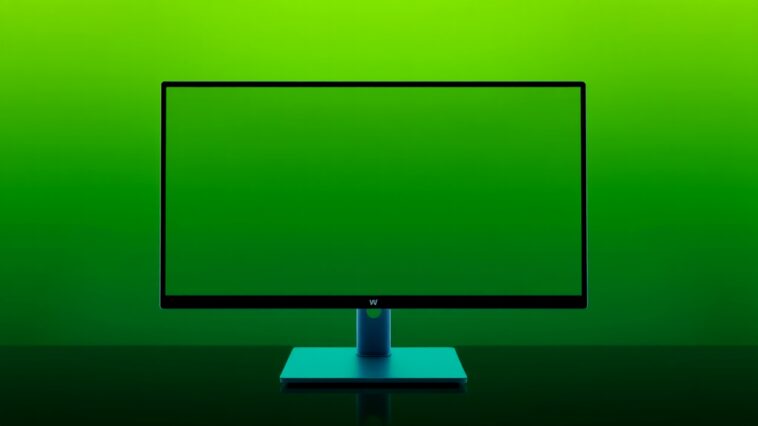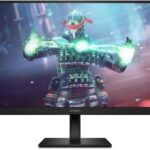Introduction
When buying a new monitor, it can feel like trying to solve a puzzle with missing pieces. There are many specifications listed, and sometimes they can be confusing. Just like how you wouldn’t want to buy a toy that doesn’t work the way you thought it would, you want to make sure the monitor you choose does what you need it to do. That’s why understanding monitor specifications is important! This article will help you navigate through some common misleading specs. It’s written by an expert who knows monitors well and has been checked by other experts for accuracy.
Understanding Common Misleading Specifications
Let’s explore some monitor specs that can often mislead you.
1. Color Gamut: Coverage vs. Size
When we talk about colors on a monitor, we often mention something called “color gamut.” Imagine a box of crayons. The color gamut tells you how many crayons (or colors) the monitor can show. But here’s the tricky part: there are two ways to talk about color gamut: coverage (how much of a color range the monitor displays) and size (the percentage of colors in a larger category).
For example, you might see a monitor that claims to support “125% sRGB.” This sounds great, but what does it really mean? It might mean the monitor can show more colors than the average monitor, but that doesn’t always mean it shows all those colors accurately. Always check reviews to find out how well a monitor actually performs with colors instead of just trusting the numbers.
2. Connectivity Specifications
Monitors connect to your computer using cables, and the types of cables can be confusing. The two common types are HDMI and DisplayPort.
HDMI Specifications
HDMI comes in different versions, like HDMI 2.0 and HDMI 2.1. HDMI 2.1 is the newer version that allows for really high-quality video, like 4K at 120Hz or 144Hz. Some manufacturers might say their monitor supports HDMI 2.1 but leave out important details about what that means. Always read the fine print to understand if the monitor truly supports the features you want.
DisplayPort Specifications
DisplayPort is another type of connection. There are also different versions here, like DisplayPort 1.4 and DisplayPort 1.2. The newer version can handle more data and allow for better resolution. There’s also DisplayPort 2.1, which is even better! But again, sometimes the specifications can be unclear, so it’s a good idea to research what each version can do.
3. USB-C Features
You might see a USB-C port on a monitor, but be careful! Not all USB-C ports are the same. USB-C can do many things, like transfer data, deliver power, and send video signals. Just because there’s a USB-C port doesn’t mean it will do all those things. Always check the specifics of what that USB-C port can handle.
Certifications: What You Need to Know
Certifications tell you if a monitor meets certain standards. However, not all certifications are created equal.
1. G-SYNC Ultimate vs. G-SYNC Compatible
G-SYNC is a technology that helps make games look smoother. There are two types of G-SYNC: G-SYNC Ultimate and G-SYNC Compatible. G-SYNC Ultimate monitors meet high standards for performance, while G-SYNC Compatible monitors work with G-SYNC but might not have all the features. It’s important to look for monitors that have been officially validated as G-SYNC to ensure you get the best performance.
2. DisplayHDR Certifications
HDR (High Dynamic Range) makes colors look more vibrant and realistic. There are different levels of DisplayHDR certifications, like DisplayHDR 400, 600, and 1000. DisplayHDR 400 is quite low and doesn’t really give you that great HDR experience. On the other hand, DisplayHDR 600 and 1000 offer much better quality, but they also require local dimming zones (areas of the screen that can independently adjust brightness). So, be cautious of marks that sound good but don’t really mean you’ll enjoy better visuals.
Other Misleading Specifications
There are other specs to watch out for too!
1. Response Time
Response time refers to how quickly a monitor can change the colors on the screen. You might see terms like GtG (gray to gray) and MPRT (moving picture response time). Sometimes, manufacturers will promote low response times, but different methods of measuring can lead to confusion. Make sure to look into how the response time is calculated and what it means for your viewing experience.
2. Dynamic Contrast Ratio
Contrast ratio tells you how different the brightest and darkest parts of the screen can be. There are dynamic contrast ratios and static contrast ratios. Dynamic contrast ratios can sound impressive but often exaggerate how the monitor performs in real life. Always compare these numbers with other specs to get a true picture.
3. Borderless Monitors
You may have heard about “borderless” monitors, which sounds like they have no edges at all. However, all monitors have some bezels (the frames around the screen). The term “borderless” can be misleading because the bezels might be thinner but they still exist. Always check photos and specifications to see the actual measurements.
Conclusion
In summary, monitor specifications can be confusing and sometimes misleading. It’s important to look beyond the flashy numbers and do your homework before making a purchase. Always read reviews, check the fine print, and verify claims to ensure you’re getting the best monitor for your needs. If you have any questions or want to share your experiences, feel free to leave a comment!
Other Related Articles
- Eizo Foris FS2331 Review
- How Much Power Does a 144Hz Monitor Use? A Deep Dive into Energy Consumption
- Should I Turn On HDR for Gaming? A Comprehensive Guide
- Is iPhone 16 Pro OLED the Best Display Yet?
- Understanding Panel Variance: What It Means for Your Monitor Purchase
- Can You Throw Computer Monitors in the Trash? The Ultimate Guide to Eco-Friendly Disposal
- Understanding VESA ClearMR: The Future of Motion Clarity in Displays
- 4K vs 1080p – Is UHD Worth The Upgrade?
- How To Choose The Right Gaming Monitor: A Comprehensive Guide
- IPS vs OLED Monitors for Color Accuracy: The Ultimate Showdown
- HDMI 2.1: The Future of Home Entertainment and Gaming
- How to Connect Heart Rate Monitor to PC?
- Curved vs Flat TV – Which Should You Choose? The Ultimate Showdown for 2025
- Can You Connect M-Audio Monitors to PC?
- Why Is My PC Showing the Same Display on Two Monitors?
- Why Are Computer Monitors More Expensive Than TVs?
- The Best Flicker-Free Monitors for Eye Care
- Monitors for Mac vs Windows PCs: The Ultimate Showdown
- 1920×1080 vs 2560×1440 – Which One Should I Choose?
- 99219444 Toshiba and Its Revolutionary Features for Tomorrow’s Tech Landscape
- OLED vs QD-OLED: The Showdown of Display Technologies
- What Is DisplayPort 2.1?
- What Is The Best Monitor Size For Gaming?
- 720p vs 1080p vs 1440p vs 4K vs 8K – Which Should I Choose?
- Is An HDR Gaming Monitor Worth It?
- Mini-LED vs MicroLED: What’s the Difference?
- Do Pawn Shops Take Computer Monitors?
- What LG Computer Monitor is as Good as the C3?
- Understanding Pixel Walk and Pixel Inversion
- Curved vs Flat Monitors for Work: Which One is Right for You?
- What Is The Soap Opera Effect?
- 4K vs 1440p Monitors for Video Editing: Which One Should You Choose?
- Do I Have to Attach a Hood to My BenQ Monitor?
- Can You Use Mac as a Monitor for PC?
- What Is G-SYNC And What Does It Do?
- Daz Studios Summoner G8 for the Visionary Artist
- Dell vs HP Monitors for Gaming
- Understanding IPS Technology: A Comprehensive Guide
- 27-Inch Monitors vs 32-Inch Monitors for Productivity
- Understanding Screen Resolution: Why It Matters for Your Displays
- How to Transport Computer Monitors?
- How to Dispose of Computer Monitors?
- What Is 4K Resolution And Is It Worth It?
- How to Pack Computer Monitor for Moving?
- What Is HDR For TVs And Is It Worth It?
- 1440p or 144Hz – Which Is Best For You?
- USB Type-C Explained – Everything You Need To Know
- Samsung’s Exciting Journey into Glasses-Free 3D Displays at Gamescom 2024
- I Have A Problem with My Samsung Odyssey G3 Monitor Setup
- Is A 144Hz Monitor Worth It? A Comprehensive Guide
- Understanding FALD Blooming and the Halo Effect: A Deep Dive
- What Does 144Hz Mean? Understanding Refresh Rates in Simple Terms
- Is an UltraWide Monitor the Right Choice for You?
- Active vs Passive 3D – What’s The Difference?
- Understanding Glare Control in Luminaires for Computer Users
- Why Does My Acer Monitor Keep Going Black?
- Understanding Motion Blur Reduction: A Gamer’s Guide
- How to Connect Studio Monitors to PC?
- Misleading Monitor Specifications You Should Look Out For
- QLED vs OLED – Which Is Best?
- Understanding VESA AdaptiveSync and MediaSync: The Future of Display Technology



 #monitor #specifications #techtips
#monitor #specifications #techtips
